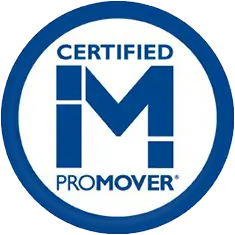Relocating across the United States can be an exciting yet daunting process. With so many logistics involved, it’s essential to understand what to expect and how to prepare effectively for your big move. In this article, we will break down the moving process into clear sections that cover everything from planning to settling into your new home.
Understanding the Basics of a Cross-Country Move
Moving across the country is not just about packing your belongings and driving to a new location. It involves coordination, planning, and often, a significant amount of time. Understanding the basics of a cross-country move can help set your expectations and make the transition smoother.
The Importance of Planning for a Long-Distance Move
Planning is the cornerstone of any successful move, particularly for long distances. A detailed plan allows you to stay organized and minimize last-minute surprises. It’s advisable to start planning several weeks or even months in advance, depending on the complexity of your move.
When planning, consider the following:
- Determine your moving timeline.
- Research potential moving companies and obtain quotes.
- Create a detailed inventory of your belongings.
- Notify utility companies and change your address.
This preparation enables you to tackle each aspect of your move methodically, reducing stress along the way. Additionally, consider creating a moving checklist that outlines tasks to complete each week leading up to your move. This can include purging items you no longer need, gathering packing supplies, and scheduling time off work to facilitate the move. By breaking down the process into manageable steps, you can maintain a sense of control over what can often feel like an overwhelming endeavor.
Key Differences Between Local and Cross-Country Moves
While local moves can often be completed in a day, cross-country moves require more intricate planning and execution. One of the significant differences is the distance involved; cross-country moves often span hundreds or thousands of miles, necessitating more thorough logistics.
Furthermore, local moves typically allow for more personal insights, such as knowing the best routes and traffic patterns. In contrast, long-distance moves might require hiring professional movers who know the best practices for traveling significant distances with your belongings. It’s also essential to consider the different regulations and requirements that may come into play when crossing state lines. For instance, some states have specific rules regarding the transport of certain items, and understanding these can save you from potential fines or complications during your move.
Moreover, the emotional aspect of a cross-country move can be quite different from a local one. Leaving behind familiar neighborhoods, friends, and routines can evoke a range of feelings, from excitement to anxiety. It’s important to acknowledge these emotions and give yourself time to adjust. Engaging with local communities in your new area, whether through social media groups or local events, can help ease the transition and foster new connections as you settle into your new home.
Preparing for the Move: Essential Steps
Preparation is key when it comes to executing a successful cross-country move. By following essential steps, you can ensure that the process goes as smoothly as possible.
Creating a Comprehensive Moving Checklist
A moving checklist is invaluable when preparing for a long-distance move. This checklist should include all tasks you need to complete before, during, and after the move. Starting with a comprehensive list helps ensure nothing is overlooked.
The checklist may include items such as:
- Sorting and purging belongings.
- Booking a moving company or rental truck.
- Preparing and packing boxes in advance.
- Confirming travel arrangements and pet care, if necessary.
Having a checklist allows you to track your progress and stay organized, lessening the stress leading up to moving day.
Deciding What to Pack and What to Leave Behind
One of the most challenging aspects of moving is determining what to take with you and what to leave behind. This decision hinges on several factors, including the size of your new home and your budget for moving costs.
To help guide your decision, consider:
- The condition of your belongings—are they worth moving?
- Your new home’s space and layout.
- Costs associated with moving heavier items, such as furniture.
Having some items that you’ve grown tired of can feel freeing, and selling or donating them can lighten your load, both physically and emotionally.
Hiring Professional Movers: What You Need to Know
When moving across the country, hiring professional movers can alleviate much of the burden. However, it’s crucial to know what to look for in a moving company and how to ensure you’re making an informed decision.

Evaluating Moving Companies: Tips and Tricks
Choosing the right moving company can be daunting. It’s important to conduct thorough research before making a selection. Start with recommendations from friends and family, and then read online reviews.
Moreover, the following tips can streamline the evaluation process:
- Always get multiple quotes to compare prices.
- Check for licensing and insurance.
- Ask companies about their experience with long-distance moves.
- Inquire about their claims policy for damaged items.
Taking these steps can help you find a reliable moving company that meets your needs.
Understanding Moving Quotes and Contracts
Understanding the difference between binding and non-binding quotes is critical. Binding quotes give you a fixed price, while non-binding may fluctuate depending on the final weight of your belongings or the services rendered. It’s important to ask the movers about these terms before signing anything.
Read the fine print in contracts carefully to understand what is covered. If you have questions, don’t hesitate to ask the moving company for clarification. A reputable mover will be willing to explain the details and address your concerns.
The Actual Moving Day: A Walkthrough
On moving day, excitement and anxiety can both be present in abundance. Being prepared for this day is essential to ensure smooth sailing as you transition into your new home.
What to Do on the Day of the Move
Start your day early. Ensure that everything is loaded and ready for the movers when they arrive. It’s also beneficial to have a plan for overseeing the packing and loading process. Ensure you have essentials close by, including:
- Important documents and valuables.
- A change of clothes.
- Snacks and water for the day.
Being organized will help you feel more in control of the day’s events.
Handling Unexpected Issues During the Move
Even the most planned moves can encounter unexpected issues. Perhaps your moving truck is delayed or severe weather affects travel plans. Be prepared to think on your feet and have a contingency plan in place.
Staying flexible and calm can help you navigate these challenges. Consider keeping a list of nearby hotels or temporary housing options in case a delay prevents you from moving into your new home on time.
Settling into Your New Home: Post-Move Tips
Once the move is completed, it’s time to settle into your new home. While the hard work may be behind you, the journey of making your new space feel like home is just beginning.
Unpacking and Organizing: Where to Start
Unpacking can feel overwhelming, but taking a systematic approach can help. Start with essential rooms such as the kitchen and bedrooms. Set priorities for unpacking based on the rooms you will use most often.
As you unpack, try to find permanent homes for items rather than leaving them in boxes for weeks. This proactive approach will help you settle in more quickly.
Getting Acquainted with Your New Neighborhood
Lastly, getting acquainted with your new neighborhood is essential for feeling at home. Take some time to explore local shops, parks, and amenities. Introduce yourself to neighbors, and consider attending local events or joining community groups.
Remember that moving is a process, and it might take time to adjust fully. Embrace the journey and take every opportunity to create a happy, fulfilling life in your new surroundings.
















